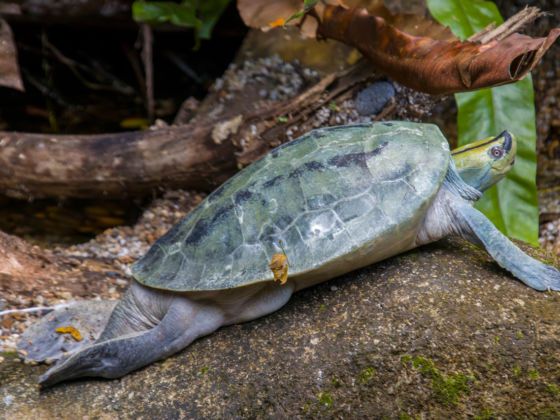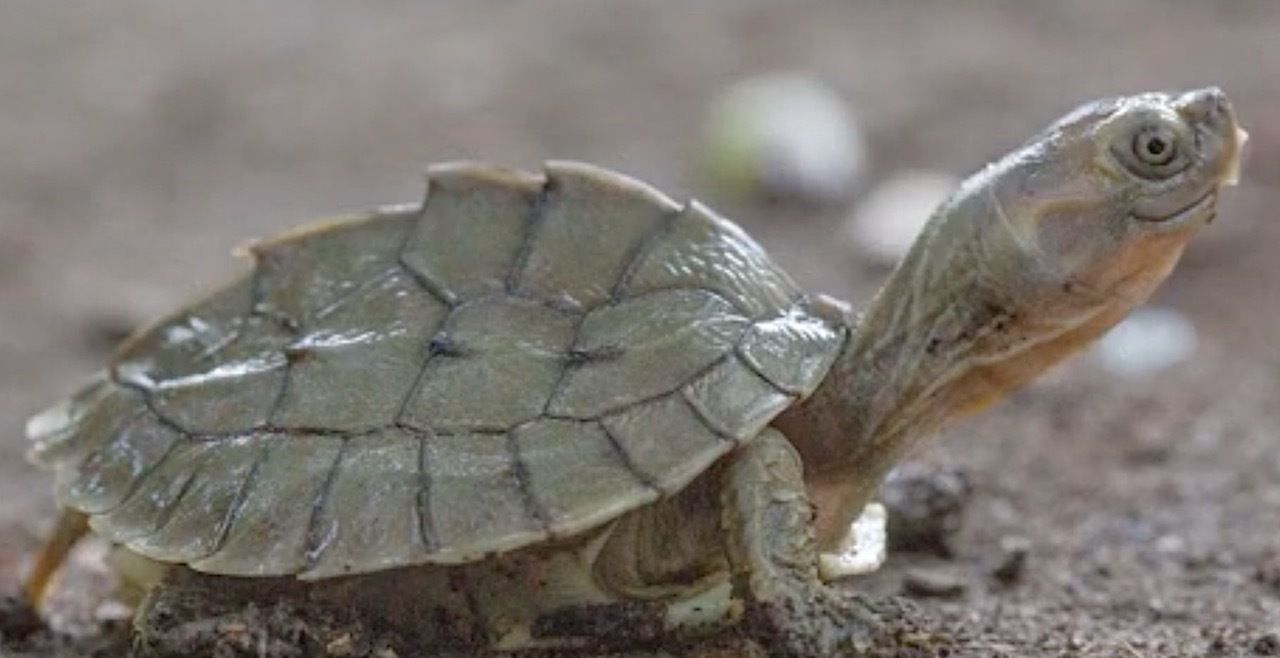A species of turtle endemic to Myanmar has a new reason to smile. The Burmese roofed turtle, once thriving along the mouth of the Irrawaddy River and whose face seems to bear a permanent smile, has faced threats to its survival after being victim to habitat loss, the pet trade, and intense fishing and egg harvesting. Thanks to the efforts of conservationists and scientists, the smiling turtle is now on the long road to recovery.


This Long-Lost Smiley Burmese Turtle Is Back From the Brink of Extinction

Photo: TurtleSurvival/YouTube
The New York Times reported that scientists discovered a small number of Burmese roofed turtles remaining in the wild and have since grown the population to about 1,000 animals. This marks an extraordinary feat, given that scientists had presumed the species extinct after being unable to locate any living members following Myanmar’s opening to the international world in the 1990s.
According to The New York Times, a shell was found by a local in 2001, and, at the same time, one individual turned up at a market in Hong Kong, alerting scientists and triggering further study. To confirm the existence of the species, Dr. Gerald Kuchling, a biologist at the University of Western Australia, led an expedition to Myanmar, where he found a small number of the turtles.
The individuals found were transported to the Mandalay zoo for protection and breeding purposes and a plan was set up with local villagers to protect the few females found to nest on a beach on the upper Chindwin River.
“We came so close to losing them,” Steven G. Platt, a herpetologist at the Wildlife Conservation Society, told The New York Times. “If we didn’t intervene when we did, this turtle would have just been gone.”
Today, there are about 1,000 Burmese roofed turtles (some bred in captivity, some naturally in the wild) living in facilities in Myanmar. The few females in the wild still go back to Chindwin beach to lay eggs every dry season.